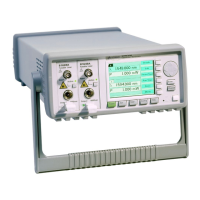436 8163A/B, 8164A/B, 8166A/B User’s Guide
15 Cleaning Instructions
For Class 3B lasers
Preferred Procedure
Use the following procedure on most occasions.
1 Clean the connector by rubbing a new, dry cotton-swab over the
surface using a small circular movement.
2 Blow away any remaining lint with compressed air.
Procedure for Stubborn Dirt
Use this procedure particularly when there is greasy dirt on the connector:
1 Moisten a new cotton-swab with isopropyl alcohol.
2 Clean the connector by rubbing the cotton-swab over the surface
using a small circular movement.
3 Take a new, dry soft-tissue and remove the alcohol, dissolved sediment
and dust, by rubbing gently over the surface using a small circular
movement.
4 Blow away any remaining lint with compressed air.
The built-in laser diode is active whenever the instrument is powered on,
therefore disabling the output is not sufficient to establish eye and skin
safe conditions.
Protect your extra-high power tunable laser from damage:
• Clean the instrument’s output connector and all interfaces of attached
fibers and termination devices to avoid burning-in dust and other
residue!
• Do not leave plastic caps on the output connector or on the end of a
connected fiber when you activate the laser – you risk damaging the
connector surface with deposit from hot plastic!
• Make sure the optical path is terminated properly and confirm that the
termination can cope with an optical power level of over +18.5 dBm or
70 mW!
• Use a metal cap to cover the laser outputs when open. Terminate
open patchcord ends with a commercially available “fiber optic light
trap”.

